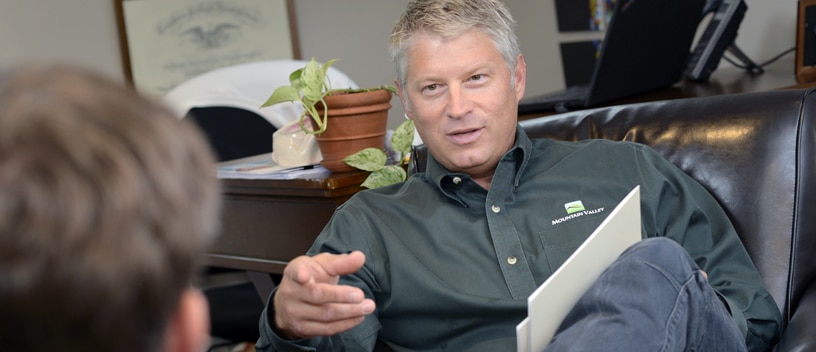THE OTHER 23 HOURS
During a recent trip to the Philadelphia area where I met with several experts in the treatment field of OCD and anxiety disorders, the topic of the importance of what happens out of the therapy session or therapist’s office, within a residential setting doing exposure work. After discussing the clinical component of Mountain Valley – the multiple individual therapy sessions per week, how we implement the enhanced exposure and response prevention (ERP) work within our clinical programming and in the therapeutic milieu; the role of the clinician vs. the role of the residential team in effecting our Cognitive Behavioral Therapy-based ERP clinical program came into the conversation.
As we discussed the above and how effective exposure work can be, especially within the ‘container’ of a 60 to 90-day specialized residential treatment program, we also discussed the type of training for the residential program staff in supporting the clinically-driven exposure work. I shared with this psychologist the Mountain Valley- developed training curriculum for our residential staff. “Residential Exposure Specialist” (RES) training is provided for all of our residential staff and is delivered by our clinical team and supervised by the residential program and clinical directors. She appreciated our focus on this, highlighting the importance of the “the other 23 hours.”
About Our Residential Exposure Specialist Training
After 90 days of successful employment and after receiving our basic curriculum centered around safety-related issues such as, driving, therapeutic boundaries, and instruction in CBT and ERP for OCD and anxiety, residential staff are enrolled in the Residential Exposure Specialist (RES) training. RES training consists of a blend of didactic instruction from the clinical staff including utilization of the Behavioral Tech™ (http://behavioraltech.org/ol/index.cfm0 on-line training platform, documented supervision by our clinical director – a licensed psychologist and supervisor of the clinical team and program – “in vivo” work with each therapist and their caseloads, and finally a written test. After successfully completing the RES training, residential staff are given an hourly raise and are then eligible for designing and implementing clinician assigned exposures during residential programming time, such as on a hike, or a trip off campus into one of the local communities, etc.
Mountain Valley’s residential program staff are typically recent college graduates who are drawn to our unique program model not only for the professional experience of working within our setting and with our population, but also because of the unique, holistic programmatic model we provide. Our residential staff typically have bachelor’s degrees and specific credentials related to our programming such as degrees in Health Education and Promotion, Therapeutic Recreation, Environmental Science and Psychology. These “millennials” bring an energy and a desire to work on a team and grow personally and professionally. Offering a competitive salary and good leadership is key, but training and growth opportunities are paramount to making their professional experience rewarding and thus ensuring our clients get the best possible treatment. Residential Exposure Specialist training as well as other opportunities for continuing education are additional ingredients in what sets Mountain Valley apart.
Mountain Valley’s Clinical Programming – ERP
Mountain Valley uses empirically supported treatment modalities for OCD and anxiety disorders. Our program and facility are managed using industry best practices. We are licensed by the State of New Hampshire, Department of Health and Human Services and nationally accredited by the Commission on Accreditation for Rehabilitation Facilities (CARF). Residents are typically with us for 60 to 90 days.
What We Treat
- Mountain Valley is uniquely organized to treat the following:
- Obsessive-compulsive disorder
- OC-spectrum disorders
- Generalized Anxiety Disorder
- Panic disorder and agoraphobia
- Social anxiety disorder
- Tic disorders, Body Focused Repetitive Behaviors such as Dermatillomania or skin picking disorder
- Co-morbid disorders such as:
- ADHD
- Depression
- Disordered and “finicky” eating
- Somatization disorders (conversion disorders)
Treatment Modalities and Services Provided
- Enhanced Exposure and Response Prevention (ERP) – individualized and group work
- Individual Treatment Planning – Three individual sessions per week
- Family therapy and education – centered around family accommodation of anxiety
- Thematic Group Therapy – DBT skills, Expressive Arts
- Mindfulness based Cognitive Therapy
- Clinically-informed academic component
- Therapeutic Equine Program
- Trauma-Focused CBT
- Recreation Therapy
- Medication Management
- Executive Functioning support
The above programming takes a team of talented and supported clinicians and energetic residential program staff. Engaged managers ensure we are maintaining a robust, creative and continuity of care based on current practice guidelines.
To schedule a visit to Mountain Valley’s White Mountains Region of New Hampshire, contact Don Vardell at dvardell@mountainvalleytreatment.org. For more information go to www.mountainvalleytreatment.org.
